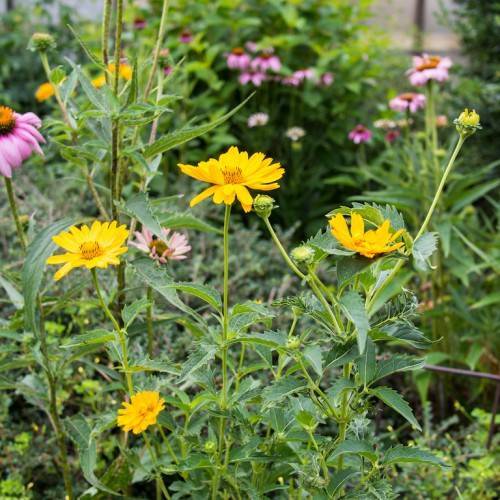
ox eye
Heliopsis helianthoides var. scabra
Cycle:
Herbaceous Perennial
Watering:
Minimum
Hardiness Zone:
3 - 9
Flowers:
Flowers
Sun:
Full sun
Leaf:
Yes
Growth Rate:
Low
Maintenance:
Low
Drought Tolerant:
Yes
Salt Tolerant:
Yes
Care Level:
Medium
watering
Ox eye plants should be watered approximately once a week, using enough water to saturate the soil to the root level. Take care to not overwater, or the plant can become susceptible to root rot. Instead, water until it pools slightly and allow the soil to dry to the touch before watering again. In hot weather or in drier climates, this may require watering every 4 or 5 days. In more humid environments, watering could be extended a little. Root level watering with a watering can or soaker hose is best for these plants.
sunlight
Ox eye flowers prefer full sunlight for at least 6 hours a day. When grown in areas with cooler temperatures, the plant may need additional time in the sun, up to 8 hours per day. In hot and dry climates, the sun exposure should be reduced to 4 to 6 hours per day.
pruning
Ox eye should be pruned in the early spring, just before new growth begins. Pruning should focus on removing any dead wood, as well as removing any straggly growth that may detract from the shape of the plant. When pruning, it is best to keep a natural form. Removal of the flowering stem is also recommended to extend the flowering season. The amount of pruning will depend on the individual plant. Some plants may require very little pruning, while others may require more. Pruning should never be done excessively, as this can cause irreparable damage to the plant.
